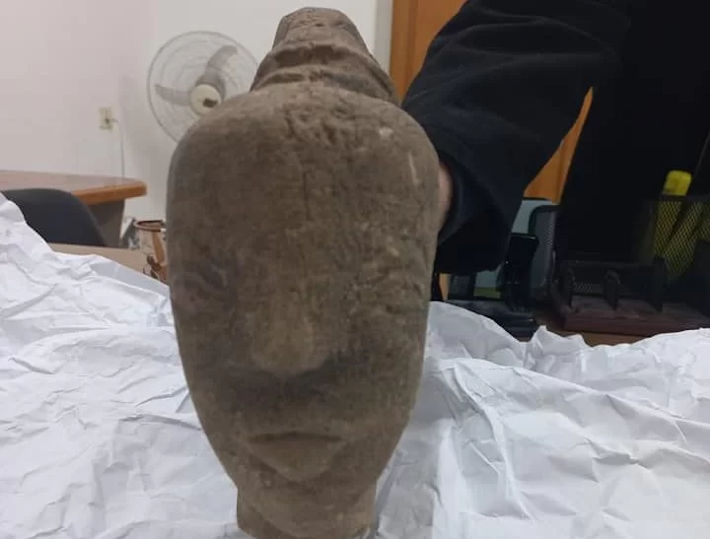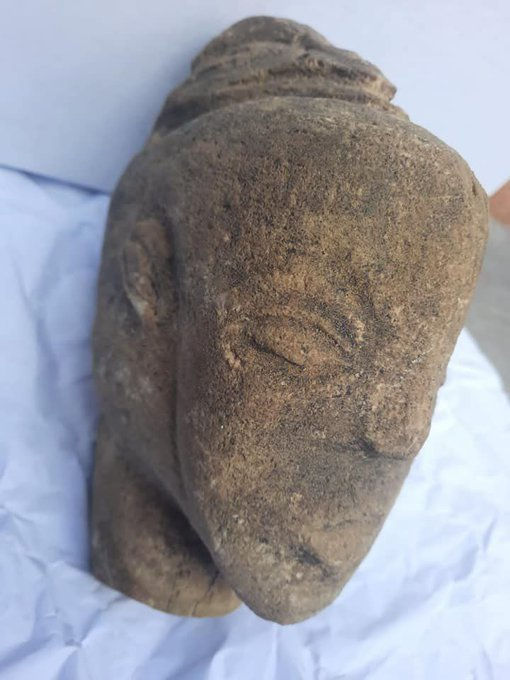Conny Waters – AncientPages.com – While working his land in the southern Gaza Strip, a Palestinian farmer found a rare 4,500-year-old stone sculpture.
According to the Ministry of Tourism and Antiquities the artifact carved out of limestone and 22 centimeters long is said to depict the Canaanite Goddess Anat and is estimated to be dated to around 2,500 B.C.

The Canaanite sculpture dating back to 2500 BC found in the Gaza Strip. Credit: English Wafa
“Anat was the goodness of love, beauty, and war in the Canaanite mythology,” said Jamal Abu Rida, the ministry’s director, in a statement.
The ancient stone sculpture was uncovered on what was an important “overland trade route for several civilizations” that lived in what is now the Gaza Strip, according to Abu Reda.
“Gaza, a narrow enclave on the Mediterranean Sea, boasts a trove of antiquities and archaeological sites as it was a major land route connecting ancient civilizations in Egypt, the Levant and Mesopotamia.
But discovered antiquities frequently disappear and development projects are given priority over the preservation of archaeological sites beneath the urban sprawl needed to accommodate 2.3 million people packed into the densely populated territory.

In 2017, the militant Hamas group, which had seized control of the Gaza Strip a decade earlier, destroyed large parts of a rare Canaanite settlement to make way for a housing development for its own employees.
And to date, a life-size statue of the Greek god Apollo that had surfaced in 2013 and then disappeared has yet to be found.
See also: More Archaeology News
In January, bulldozers digging for an Egyptian-funded housing project unearthed the ruins of a tomb dating back to the Roman era,” Agency French Press reports.
Written by Conny Waters – AncientPages.com Staff Writer





